The Jeffery Quad seen here, was designed and manufactured in Kenosha, Wisconsin, the home of the Thomas B. Jeffery Co. The rugged and capable vehicle was built by the company, that had earlier made a success of the Rambler Co. In 1915 Charles T. Jeffery, changed the name of the automobiles built by the firm from Rambler, to Jeffery to honor the founder, his father Thomas B. Jeffery, who had died earlier in 1910.
The Quad seen here, is carrying a load of Solar Lamps, which where also made in Kenosha. The date the photo was taken appears to be 1916 judging by the license plate and this was some two years after the Quad was first built.
The exact date and origin of the Quad is hard to pin down as there are several conflicting versions of its beginning, all involving the U.S. Army during the 1913-14 time period. One version involved Martin Winther (scroll down) an engineer, who would later go on to manufacture his own line of trucks. This much is clear, it was well designed and built and came out at the right time, just before WWI during which, several thousand units served the allies. The four-wheel-drive vehicle was also equipped with four-wheel-steering and proved to be the perfect vehicle for the rough going on the roads and battlefields during WWI.
Photos (above) left and right show early Quads that may have been test units. One of the differentials used can clearly be seen in the left photo, just above the front axle. In the center above, is an advertisement from The Motor Age, July 2, 1914, issue, dated just 26 days before the start of WWI.
The Quad was powered by a rugged four-cylinder 312 c.i. Buda engine similar to the engine seen (above) in an article about the company in the Automobile Trade Journal, November, 1914 issue. The Buda Company, an engine manufacturer, was located in Harvey, Ill.
The engine fed its power back to a combination, four-speed-transmission-transfer case with silent-chain-final-drive. From the transfer case, shafts led to locking differentials mounted on the top of both the front and rear axles. The drive then was by shafts to each wheel and a u-joint and bearing then followed by a pinion gear. This pinion gear then drove an internal toothed ring gear at each of the four wheels.
The left photo (above) shows a bare chassis, where the center-mounted transmission-transfer case can clearly been seen. This chassis appears to be one of the two-wheel-steer models which may have only been made for one year. A test chassis on the right (above) is seen wallowing through the mud and is buried up to the hubcaps, the Jeffery Factory can also be seen on the right in the background. The center photo shows a front view of the Nash Quad belonging to Charles Kellogg, which you will also see and learn about (below).
In 1916 Charles T. Jeffery announced the sale of the company to Charles W. Nash and the Lee, Higginson & Company and the Jeffery Quad then went on to become the Nash Quad. This was after Jeffery as a passenger, had survived the sinking of the Lusitania and decided to retire at the age of forty to pursue other interests.
In addition to the many adaptions of the Quad during WWI, the photo (above) shows what may very well be the most unusual. Charles Kellogg, a humanitarian and a naturalist who wanted, as he wrote, “To awaken interest in the great redwood forests of California, and to assist in their preserv-ation.” Kellogg went on to build the Travel Log motor home as seen here in a side view. A front view of the behemoth can be seen in the middle of the row of photos (above) it. Both were taken during a visit by Kellogg to the Nash factory, on one of his several cross-country journeys.
According to Ketzel Levine of NPR: “The very colorful Kellog mounted a hand-hewn, hollowed out redwood log on the back of a 1917 Nash Quad truck. From 1917-1921, Kellogg took his Travel Log on the road. He drove it across the country four times, coast-to-coast, bringing word of the redwoods to people who had never heard, let alone imagined, there could be such trees. He spoke of the accelerated logging taking place in the redwood forests, made impassionate pleas for the trees’ preservation, and spread the word about a fledgling organization looking for members. It was called the Save The Redwoods League”. You can learn more about some of Kelloggs’ other talents at NPR.
The Travel Log still exists and can be seen at the Humboldt Redwoods State Park Visitor Center, in Weott, CA.
At the same time the Quad was being produced, Jeffery also rounded out its truck line, with a conventional style Jeffery 1 1/2 ton double chain drive truck as seen (above). According to an article in the Sept. 5, 1914, Automobile Topics, the firm added this 38 h.p. unit, along with a smaller 1,500-pound truck that “was suited for the quick delivery of merchandise”.
You can look back on The Old Motor to The Early Ramblers of Thomas B. Jeffery and also some excellent photos of a 1906 Rambler Surrey. All photos courtesy of the Kenosha County Historical Society and the University of Wisconsin Library.

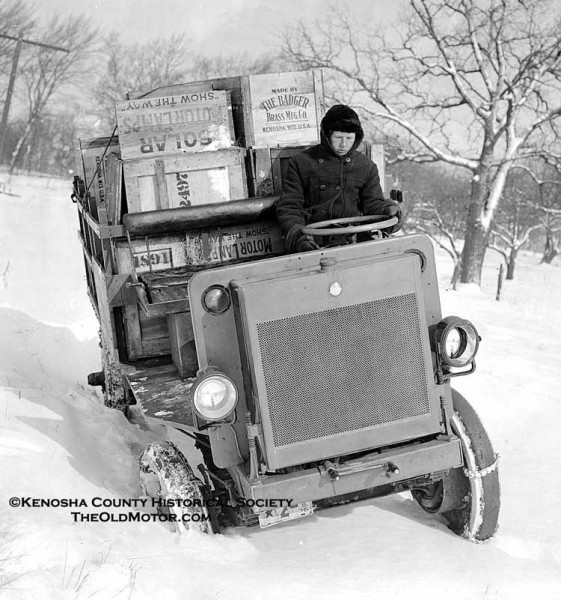
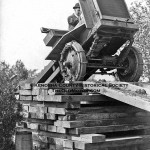
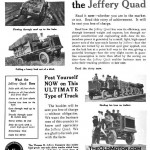
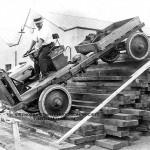
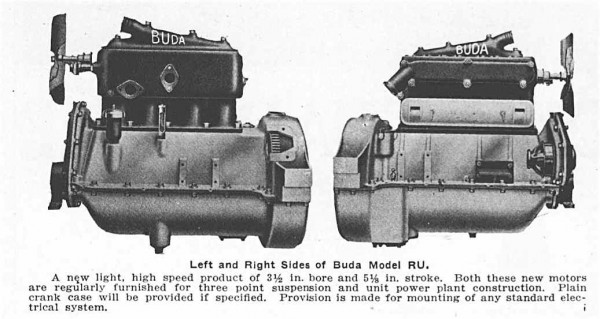
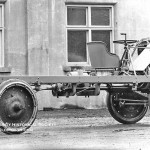
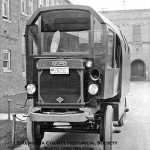
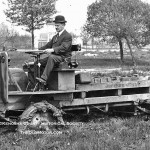
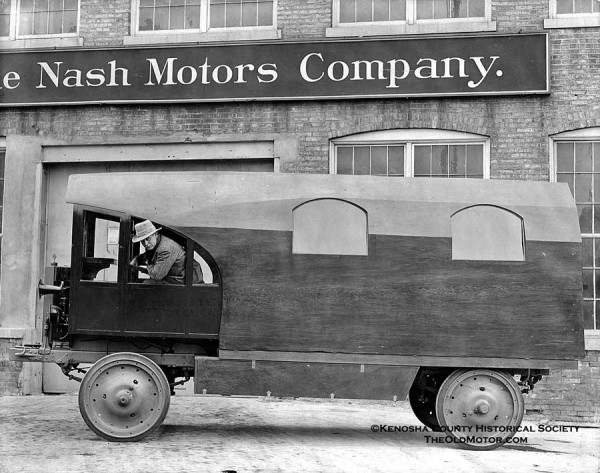
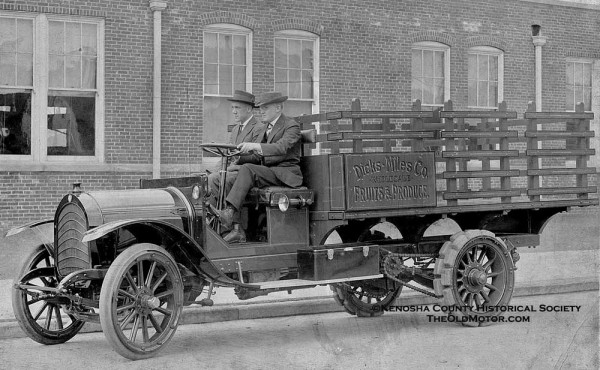
great article
I have just today discovered this page, and respectfully refer all interested parties to my post today on my Facebook Page: “The First World War: A Gruendler Centennial”, where I post a pic of my grandfather, Wm. P. B. Gruendler next to his Quad. He was a member of Company “D”, 314th Engineers, 89th Division, AEF 1917-1919.
Please feel free to use it as you wish, but remember my dear grandpa, please.
The Quad was also used extensively in the Punitive Expedition of 1916, when American troops were pursuing Pancho Villa in Chihuahua, Mexico. Over 100 were purchased and in use by August 1916.